Prime Factorization of an Integer
The method of prime factorization is used to “break down” or express a given number as a product of prime numbers. More so, if a prime number occurs more than once in the factorization, it is usually expressed in exponential form to make it look more compact.
Otherwise, we will have a long list of prime numbers being multiplied together. In this lesson, I have prepared eight (8) worked examples to explain the process of factorization using Prime numbers.
Note: When I make mention of “numbers” here, I mean to say positive integers.
Definition of a Prime Number, and Examples and Non-examples of Prime Numbers
Let’s get started by defining first what a prime number is. Study both the examples and counterexamples of prime numbers carefully.
What is a Prime Number?
A prime number [latex]p[/latex] is a whole number greater than 1 that is only divisible by 1 and itself. Another way of saying it is a prime number has exactly two factors, namely: 1 and itself.
Examples of Prime Numbers:
- The number 2 is a prime number because it is divisible only by 1 and 2 (itself)
- The number 17 is a prime number because it has exactly two factors which are 1 and 17 (itself)
- The number 31 is a prime number because it can only be divided by two numbers namely 1 and 31 (itself)
Examples of Numbers that are Not Prime:
- The number 10 is not a prime number because it is divisible by 1, 5, and 10 (itself) therefore having more than two factors
- The number 27 is not a prime number because it is divisible by more than two factors other than 1 and itself that includes 3 and 9
- The number 49 is not a prime number because it can also be divided by 7 other than 1 and 49 (itself), thus having more than two factors
Now, I will explain the general steps involved in performing prime factorization of a given positive integer.
How to Perform Prime Factorization
Step 1: List down at least the first few prime numbers in increasing order. I will stop at 19 because this is large enough for the numbers in this tutorial that we will factorize.
2, 3, 5, 7, 11, 13, 17, 19 …
Step 2: For any given number, test if it is divisible by the smallest prime number which is 2. If the prime number 2 divides the given number evenly, then express it as factors:
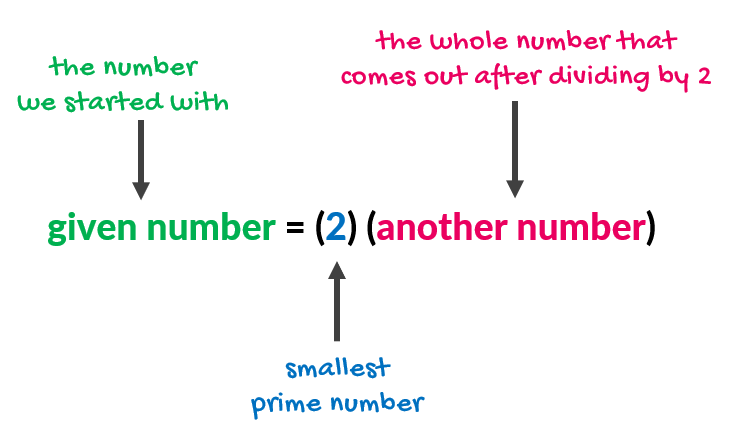
Step 3: Check again if the other number that comes out is divisible by 2. If it is, keep going until the new number is no longer divisible by 2. Two things can happen here:
- After the repeated division of 2, you end up getting a prime number. Proceed to the final step. You’re almost done!
- After the repeated division of 2, you end up having a composite number (not prime) but cannot be divided by 2. Move to Step 4.
Step 4: Move to the next larger prime numbers such as 3, 5, 7, and so on, as needed to check if the number that we left off in the prior step can be divided evenly further. This repetitive process of dividing by prime numbers in increasing order will ultimately give us the last prime factor.
Final Step: At this point, we should have a long list of prime numbers that are being multiplied together. We just need to present our final answer as a product of exponential expressions with prime bases. That is it! A quick example may look like this…
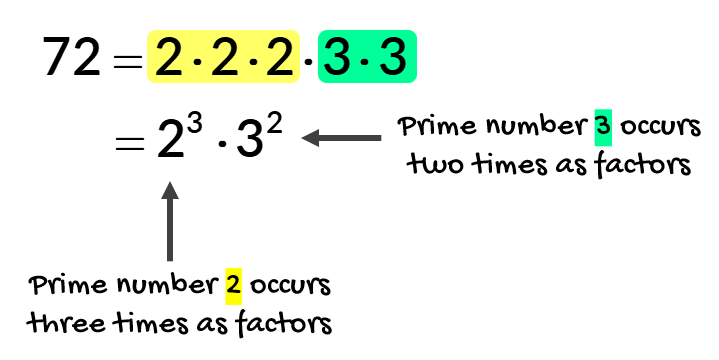
The exponent of each prime number tells how many times that prime occurs as factors.
Examples of How to Perform Prime Factorization using Prime Factor Tree and Upside-Down Division
Example 1: Find the prime factorization of 40 and express it in exponential notation.
I begin by listing the first few prime numbers in increasing order. The goal is to keep dividing the given number by an appropriate prime number starting from the lowest until the last quotient becomes prime as well.
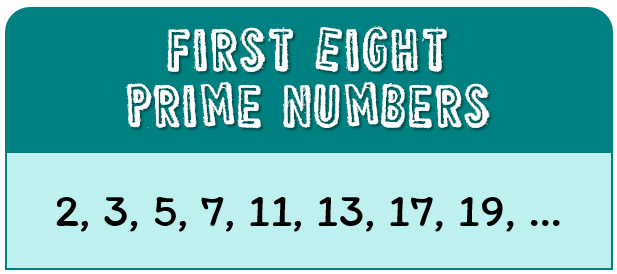
There are two common ways to perform prime factorization. The first is called the Prime Factor Tree, and the second is known as the Upside-Down Division. With this, I will also show you two ways to prime factorize the number 40.
Prime Factor Tree
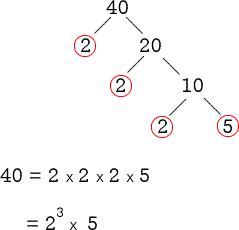
- Start by dividing the given number by the smallest prime which is 2.
- The factors of the number above are broken down into “branches” as indicated by the line segments.
- We can divide 40 and its quotient by the prime number 2 three times which means this prime number will have an exponent of 3 in the factorization.
- The last quotient after the repeated division of 2 is a prime number which is 5.
- Upon reaching a prime number as its last quotient in the process, this shows that we are done!
Upside-Down Division
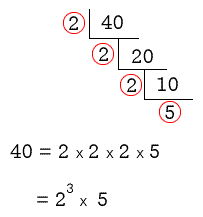
- Now you know why it is called the Upside-Down Division because the division symbol is literally upside-down.

- I start dividing the given number by the smallest prime number which is 2. If that prime evenly divides the number, then I place the quotient below. Continue the process as needed.
- Notice that we can perform repeated division of prime number 2, until reaching the prime number 5 as its final whole number quotient (most bottom).
- Present the final factorization as a product of exponential numbers having a prime number base in the exponential notation.
Example 2: Find the prime factorization of 32 and express it in exponential notation.
This is an even number, and thus divisible by prime number 2. So without hesitation, I begin using it as the starting divisor of choice.
Prime Factor Tree
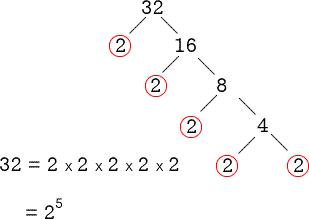
- Start by dividing the given number by the smallest prime which is 2.
- The factors of the number above are broken down into “branches” as indicated by the line segments.
- After the repeated division of 2, we also arrive at the final factor of 2. This is done!
- Since prime number 2 appears five times as factors, then the final answer will be [latex]32 = {2^5}[/latex].
Upside-Down Division
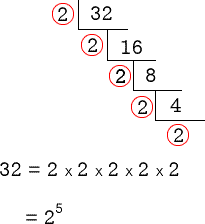
- I start dividing the given number by the smallest prime number which is 2. If that prime evenly divides the number, then I place the quotient below. Continue the process as needed.
- This is great! We only used a single prime number to work this out until the end.
- Prime number 2 appears five times as factors. Thus our answer is simply [latex]32 = {2^5}[/latex].
Example 3: Find the prime factorization of 147 and express it in exponential notation.
I first recognize that 147 is an odd number, therefore, not divisible by 2. Move on to the next larger prime number, which is 3.

I am not sure if you have encountered the “nice” divisibility rule for number 3. It states that if the sum of the digits of a number is divisible by 3, then the original number is also divisible by 3.
We have 147, the sum of its digits is 147 = 1 + 4 + 7 = 12 which is divisible by 3. This implies that 147 must also be divisible by 3.
You don’t have to show every time the prime factorization of a number using the two methods. Just pick the one that is easy or convenient for you. For this exercise, I will utilize the Factor Tree method.
Prime Factor Tree
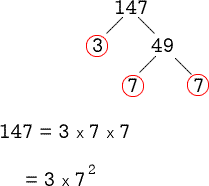
- Since prime number 2 can’t evenly divide 147, check on the next larger prime which is 3. Yep! This should work.
- After dividing 147 by 3, I get 49 which is obviously a perfect square since [latex]49 = {7^2}[/latex]
- The next logical prime number to use as the divisor is 7.
Example 4: Find the prime factorization of 540 and express it in exponential notation.
We know that any even number is always divisible by 2. So I would start dividing 540 by prime number 2. Let me use Upside-Down Division to prime factorize this number.
Upside-Down Division
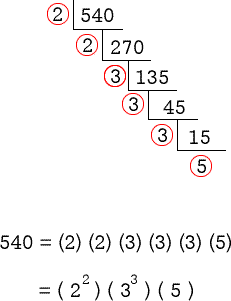
- The given number 540 is even so 2 can divide it. Here, we perform two successive division using prime number 2 as the divisor.
- We arrive at 135 as the partial factor which is divisible by the next larger prime, that is 3!
- Do repeated division by 3, and you should end up with the last factor of 5 which is a prime number. That’s it! Just collect the distinct primes and assign appropriate powers or exponents to present your final answer.
Example 5: Find the prime factorization of 945 and express it in exponential notation.
You may also do the prime factorization in its most straightforward way – that is, factor out the number horizontally and down the line. Just make sure that you always start with the lowest prime number, and go to the next larger one as needed to break it down until you end up with the final prime factor. Some textbooks do it this way to save space. It’s nice to add this method to your math “toolbox”.
Solution:

It has five prime factors where three (3) of them are distinct, namely: 3, 5, and 7.
Example 6: Find the prime factorization of 1320 and express it in exponential notation.
Solution:
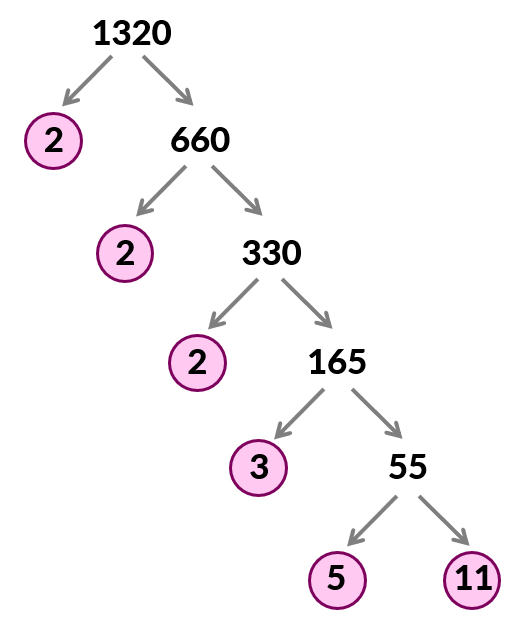

Example 7: Find the prime factorization of 2025 and express it in exponential notation.
HINT: The given number is odd, so prime number 2 cannot divide it evenly. Start with 3.
Solution:
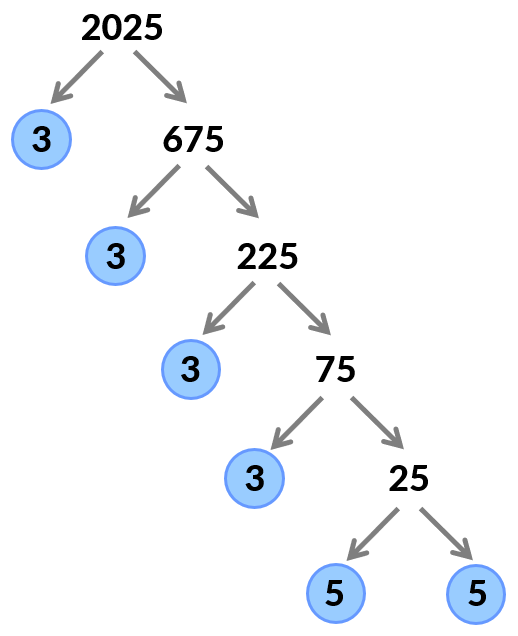
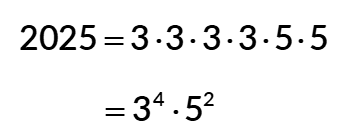
Example 8: Find the prime factorization of 432 and express it in exponential notation.
NOTE: I used a slightly different method here. I call it, “Composite stays inside, Prime stays outside“. I am pertaining to the parenthesis in reference to where the composite or prime number stays.
Solution:
The goal is to keep the factored prime numbers outside the parenthesis while forcing the composite numbers to stay inside. In the end, we should have all primes and the parentheses disappear!
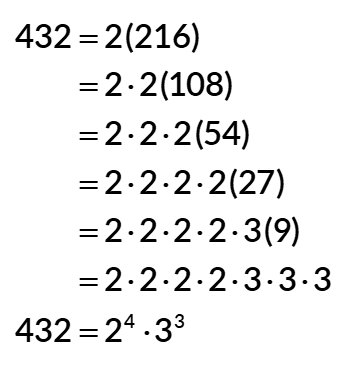
You may also be interested in these related math lessons or tutorials:
Fundamental Theorem of Arithmetic
List of Prime Factorizations of Integers from 2 to 200
List of Prime Factorizations of Integers from 201 to 400
